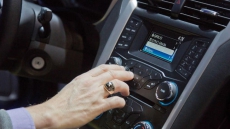Japan's cartographic authorities have announced the development of software that allows one to download data from the internet and using a 3D printer, produce geographical maps of the country for the visually impaired at an economical cost.
The Geospatial Information Authority of Japan (GSI), attached to the ministry of land, infrastructure, transport and tourism, will work with experts from different regions on the development phase.
This is to ensure that highways, walkways or railway lines are well-differentiated in the final product, reported the digital edition of the Asahi daily Wednesday.
The programme's data will allow one to print streets having a height of one mm that can be easily detected with the fingers.
A professor at Niigata University, who is participating in the creation of the software, explained to the newspaper that if they also managed to introduce topographical characteristics such as uneven surfaces and hills, these maps could be used in courses for the blind focused on emergencies and evacuations in the case of an earthquake or a tsunami.
Once the software is developed, all the cartographic data of Japan needed to create such maps will be available on the internet.
Maps for urban zones will have a scale of 1:2.5 (1 cm equals 25 m) while those of rural areas will be in the scale of 1:25 (1 cm equals 250 m).
The maps will be printed on resin sheets of 15 x 15 cm costing $1.40 per unit.
The printers needed to print the maps cost between $552 and $644 in Japan.
GSI explained that given the popularisation of 3D printers, it would also offer data in the future to develop maps of very specific places at prior request.





